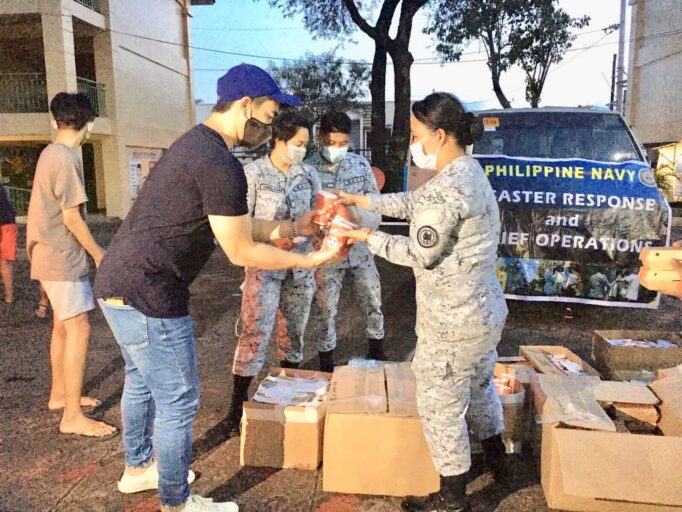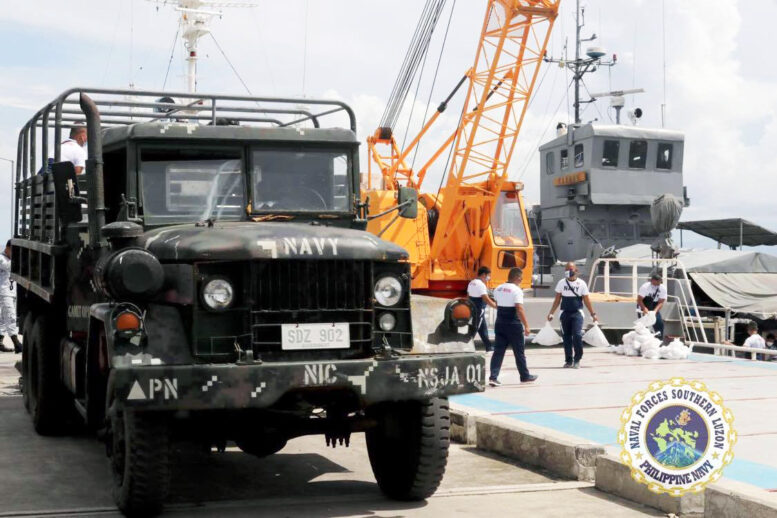Early this year, a joint team of the Bureau of Customs (BUCUS) and the Philippine Coast Guard (PCG) apprehended a Chinese dredger “MV Zhonhai 68” for illegal and unauthorized presence in Philippine waters. Carrying a Sierra Leone flag and operated by Malaysian-registered HK Weifeng Hangyu Co. Ltd., the vessel was cleared by Cagayan Province authorities to leave the country more than a year ago but was traced in Bataan.
Upon inspection, the joint team found the automatic identification system (AIS) turned off to evade detection by electronic means. Several other Chinese cargo and dredging ships were also spotted in 2019 and 2020 by residents in the provinces of Zambales, Batangas and Cagayan. These vessels engaged in dredging and quarrying along coastal areas and tributaries, some without permits.
The recent successful maritime law enforcement operation reflects renewed efforts to detect, prevent and suppress violations of maritime laws and their concomitant rules and regulations. This is the first publicized joint accomplishment of the two agencies since their signing of the Joint Patrol Agreement in September 2020 to coordinate actions in enforcing their respective mandates.
The importance of inter-organizational coordination is well covered by numerous literature. In contrast to inter-agency coordination where players come only from government, inter-organizational coordination involves participation from governmental, inter-governmental, non-governmental and private organizations.
The Revised Administrative Code of 1987, sometimes referred to as the Philippine government’s organizational manual as it provides the principles, structures and rules of governance, expounds the Constitutional principle that the prime duty of government is to serve and protect the people. The Code empowers the governmental regional offices “to provide economical, efficient and effective service to the people in the area” and “coordinate” with their counterparts in other departments and the local government units.
Whether interagency or inter-organizational in nature, the goal of coordination is to “improve the effectiveness of cooperation, planning and partnership.” It is a process of organizing a complex undertaking that brings together the contributions of the member organizations to form a coherent and efficient work to solve a problem or meet an identified need. It entails creating formal structures, relationships and processes. It also facilitates unity of effort and provides common understanding. The essence of coordination is the effective integration of multiple stakeholders with diverse perspectives, authorities, responsibilities and objectives.

PN Disaster Response and Relief Operations
Inter-organizational coordination is characterized by transparency, rationality, reciprocity, cooperation, communications, cultural ethos and organizational history, investments, research, field experience, trust, institutional support, and policy implication. The collective decision by the member organizations goes through some, or any, of these processes: consensus, cooperation, collaboration, compromise, consultation and deconfliction. Necessarily, leadership is crucial and the designated leader should possess qualities that demonstrate vision, courage, integrity, humility, foresight and focus. Some areas where close coordination is required are national security, emergency management including health, critical infrastructure protection, and natural and man-made disaster preparedness and response.
The United Nations (UN) is one inter-governmental organization that heavily relies on coordination to address its multifarious tasks. In 1991, the UN created the Office of Coordination of Humanitarian Affairs (OCHA) to strengthen international response to complex emergencies and natural disasters. In the aftermath of Typhoon Haiyan (Yolanda) in Leyte-Samar provinces, OCHA was one of the leading coordinators, in tandem with the National Disaster Risk Reduction and Management Council (NDRRMC), of emergency response activities. The Office caused the release of $500 million from the UN Central Emergency Response Fund and the Strategic Response Fund, and accounted US$375 million from various donors. There were unmonitored cash transfers from other sources that OCHA estimated to surpass the recorded financial assistance. It also served as a focal point of 22 militaries and the AFP in providing relief goods for 4 million displaced individuals.
Typhoon Yolanda affected 14 million people in Eastern Visayas where over 6,000 perished. The prompt and orderly delivery of humanitarian assistance in disaster-ravaged area manifested the excellent coordinative efforts of multinational organizations and the private sector.
On the other hand, just like the OCHA, the World Health Organization (WHO) depends on coordination with the member states and other stakeholders to execute its mandate. It updated the International Health Regulations in 2005 to “prevent, protect against, control and provide a public health response to international spread of disease in ways that are commensurate with and restricted to public health risks, and which avoid unnecessary interference with international traffic and trade.” These regulations are adopted by the member states.
In May 2014, President Aquino issued EO 168 that created the Inter-agency Task Force for the Management of Emerging Infectious Diseases (EID) in the Philippines and directed the formulation of an EID Preparedness Manual to address government response and protocol to manage EID cases. In September 2014, the Department of Health (DOH) issued Memorandum 2014-260, “Interim Guidelines on the Preparedness and Response to MERS-CoV,” a comprehensive paper that provides “clear guidelines on public health interventions that can be instituted for the prevention and control of viral respiratory infections such as those caused by corona viruses.”
Three years later, the department formulated its Emerging and Re-Emerging Infectious Disease Program that listed the various goals and strategies like strengthening the rapid response teams, conduct of seminars and workshops, collaboration/networking with other agencies and partners, and field visits. Absent from this program are mobilization exercises at various levels of governance structure, strategic communications, and regular coordinative activities.
Inter-organizational coordination is one of the effective tools employed by the US military. Senior officers take capstone courses to prepare them for overseas assignments, like the Combined Force Maritime Component Commander Flag-level Course. The objectives of this training are to strengthen existing or develop new relationships in overseas operational areas, and to develop effective strategies for working together and enhancing stability, trade and prosperity. Subject matter expert topic presentations and subsequent discussions on command and control, multinational operations, information sharing, maritime security and humanitarian assistance and disaster relief, as well as command center tour, are geared towards attaining the course objectives.
I had attended this course in Hawaii while commanding the naval forces in Western Mindanao in 2007 to 2008, and it gave me the idea to invite the regional officials in Western Mindanao, including the provincial governors of Basilan, Tawi-Tawi, and the Zamboanga City mayor, to a quarterly inter-organizational meeting to establish a working relationship, familiarize with each other’s agencies’ mandate and learning areas of cooperation to better serve the people.
The maritime domain is a highly complex system. The actions of the players reflect the pursuit of one’s own organizational interest, a compromise of internal norms, and adherence to rules. Thus, inter-organizational coordination players must complement the formal structures, relationships and processes with informal interactions among them to build a consensus and settle differences. This would significantly expedite inter-organizational decision making processes.
